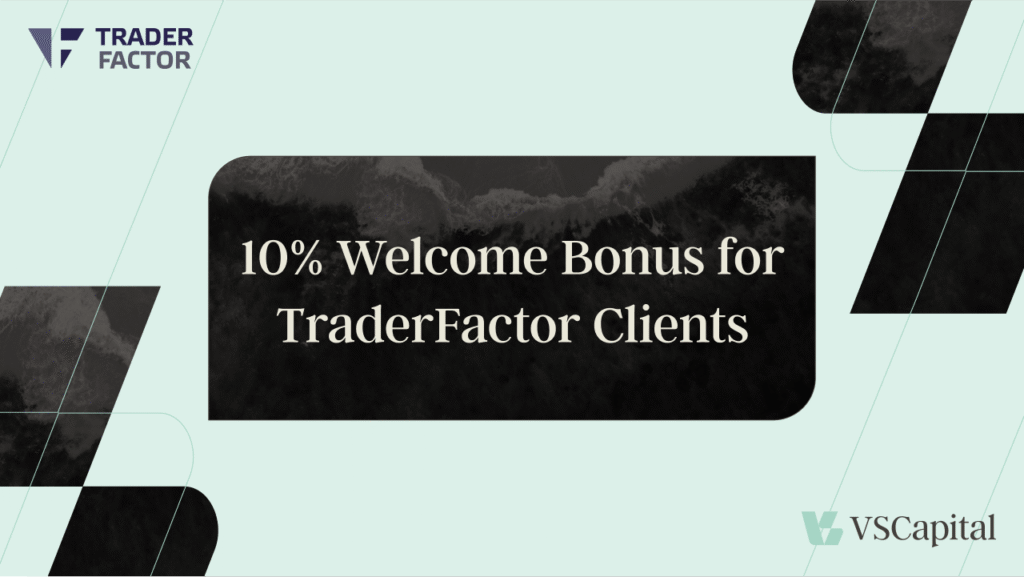In the world of foreign exchange (Forex) trading, there are as many strategies as there are traders. Among these, Forex scalping stands out as a popular technique used by traders looking to make quick profits by entering and exiting the market rapidly. This method capitalizes on small price changes and requires strict discipline, a keen understanding of market movements, and the ability to act swiftly.
So, if you’re ready to explore a strategy that can potentially yield you large volumes and quick profit opportunities in the Forex market, let’s dive into the world of the best Forex scalping strategy and uncover the practical steps to implement this strategy effectively.
Table of Contents
ToggleHow Forex Scalping Works
Forex scalping is an intraday trading strategy that involves making multiple buying and selling currencies throughout the day to capture small price movements. Unlike other trading strategies that focus on long-term trends, scalpers take advantage of short-term fluctuations in the market.
By executing quick trades within seconds or minutes, scalpers aim to accumulate small profits that can add up over time. To successfully implement Forex scalping, it is essential to consider several scalping strategies :
Let’s illustrate the concept of Forex scalping with the following example.
Imagine you’re a trader focusing on the EUR/USD pair, which is one of the most traded currency pairs worldwide and is known for its liquidity and tight spreads, two vital factors for scalping.
On this particular day, you notice the market conditions are favorable for scalping. The EUR/USD pair is experiencing increased volatility during the overlap of the European and North American trading sessions, offering many opportunities for quick profits.
You start your trading session right when economic news from European countries is released, causing a flurry of activity. Your trading platform is equipped with automated systems and complex algorithms designed to execute trades rapidly. You’ve also got your eye on the candlestick charts, ready to spot those crucial price movements.
The bid-ask spread for EUR/USD is tight, only 1-2 pips, minimizing potential transaction costs. As the price dips, a well-defined candlestick pattern emerges, signaling a potential uptrend. You enter a buy trade, snapping up euros at 1.1200. Within minutes, the price ticks up to 1.1205—a modest change, but in the world of scalping, this 5-pip movement is enough. You quickly close the position for a tidy profit.
Throughout the day, you repeat this process, making many trades. Each trade isn’t aiming for a windfall, but rather a collection of small wins that, when added together, aim for a significant return. It is a meticulous strategy that requires constant attention and quick reflexes, but for many, the potential for quick profits makes it an appealing approach to Forex trading.

Scalping Techniques
| Technique | Description |
|---|---|
| Price Action Scalping | Analyzes raw price movements and patterns using candlestick formations, chart patterns, and support/resistance levels. |
| Scalping With Technical Indicators | Relies on technical indicators like moving averages, stochastic oscillators, and Bollinger Bands to identify market conditions for entry or exit points. |
| Scalping The News | Takes advantage of volatility from economic news releases and trades based on the expected impact on prices. |
| Trend Following Scalping | Identifies and trades in the direction of the prevailing market trend to profit from short-term momentum. |
| Counter-Trend Scalping | Looks for temporary reversals against the prevailing trend to capitalize on short-term countertrend movements. |
| Scalping Breakouts | Trades on price breakouts from key support or resistance levels, expecting continued momentum. |
| Scalping Using Pivot Points | Uses pivot points to determine potential support and resistance levels and trades based on price reactions at these levels. |
| Time Of Day Scalping | Focuses on trading during specific times of day with increased market activity and volatility. |
| Scalping With Limit Orders | Places limit orders at specific price levels for more precise trade entries and to capture quick price fills. |
| Scalping With Multiple Timeframes | Analyzes different timeframes for overall trend (higher timeframe) and precision entry/exit points (lower timeframe). |
| Scalping With Price Rejection | Observes price rejection at certain levels signaling potential reversals or continuations for quick trade opportunities. |
| Scalping Using Tick And Volume Analysis | Analyzes tick data and volume for short-term trading opportunities based on shifts in market sentiment. |
| Scalping With Breakout Patterns | Looks for chart patterns signaling potential breakouts and enters trades expecting momentum continuation. |
| Scalping Using Fibonacci Levels | Utilizes Fibonacci retracement and extension levels for identifying potential trade entry and exit points at key levels. |
| Adaptive Scalping Strategy | Adjusts strategies based on current market conditions, considering factors such as volatility, liquidity, and news events. |
Each scalping strategy has its own nuances and requires practice to master. Traders often combine elements from various strategies to create a personalized approach that fits their trading style and the market conditions they are operating in.

Quick Trade Execution
One of the key elements of scalping is the ability to execute trades swiftly. Scalpers need to have access to a reliable and fast trading platform that allows them to enter and exit trades without delay. Additionally, having a stable internet connection is crucial to ensure real-time trade execution.
Imagine you’re watching the GBP/USD pair closely. The spread is a favorable 2 pips. Suddenly, there’s an unexpected news release affecting the pound, creating an immediate opportunity. With your advanced trading platform, you immediately place a short position as the pound starts to fall, locking in at 1.3100. Within seconds, the price drops to 1.3095, and you swiftly close the position, capturing a quick 5-pip profit.
Short Timeframes
Scalping typically involves trading on shorter timeframes, such as one-minute or five-minute charts. These short positions allow traders to identify and capitalize on small price movements that might go unnoticed on longer timeframes. It requires constant price action analysis and timely decision-making.
You’re scalping the USD/JPY pair, using a one-minute chart to identify micro-trends. The pair has been ranging between 110.00 and 110.10 for the last hour. You notice a sudden burst of buying pressure pushing the price to 110.08. Anticipating a brief rally, you enter a long position and set a tight stop loss. As expected, the price touches 110.12, and you exit quickly, securing a 4-pip gain in a matter of minutes.
Small Price Movements
Scalpers thrive on small price movements. They look for opportunities where the market exhibits minor fluctuations, allowing them to quickly enter and exit trades for small but frequent profits. Careful analysis of price patterns, support and resistance levels, and technical indicators is necessary to identify these trade setups.
On a typical day, you’re focused on the EUR/CHF pair, known for its smaller movements but steadier trends. You spot a gradual uptick trend on your five-minute chart as the pair rises from 1.0800 to 1.0803. Recognizing the momentum, you buy at the breakout and sell at 1.0806, making a modest 3-pip profit. These small increments can accumulate significantly throughout the trading day.

Multiple Trades
Scalping involves taking numerous trades throughout the day. Traders may enter and exit positions dozens of times within a trading session. However, it is important to note that not all trades will be profitable. Risk management and disciplined trade selection are key to mitigating potential losses.
During the Asian trading session, you decide to focus on the AUD/NZD pair. You perform over 30 trades, capitalizing on the slight fluctuations within a 10-pip range. While some trades result in a loss of 1 or 2 pips, others yield profits of 3 to 5 pips. By the end of the session, the wins outweigh the losses, resulting in a profitable day.
Technical Analysis
Technical analysis plays a vital role in scalping. Forex traders use different types of indicators, including oscillators, moving averages, as well as trend lines, to identify potential trade setups. These tools assist in determining precision entry and exit points, as well as providing insights into market trends and volatility.
You’re observing the five-minute chart for the USD/CAD pair. The Relative Strength Index (RSI) dips below 30, indicating an oversold condition. Concurrently, a bullish engulfing candlestick pattern forms, suggesting a potential upward reversal. Trusting your analysis, you enter a buy trade. Minutes later, as the RSI moves back above 30, and your trade hits a small profit target, you exit, leveraging technical indicators to execute a successful scalp trade.
Tight Spreads and Low Costs
Scalpers aim to capture small price movements, so transaction costs can significantly impact profitability. Therefore, it is crucial to choose a broker that offers tight spreads and low securities and exchange commissions. Minimizing trading costs enables scalpers to maximize their profits.
For a scalper, each pip matters. Imagine a scenario where a trader using a broker like OneRoyal, which is known for its low costs, engages in trading the EUR/USD pair. The spread is just 0.1 pips. If you take a position of 100,000 units (1 standard lot), the cost incurred from the spread alone is only $10 (assuming 1 pip = $10 for simplicity). If the market moves 2 pips in your favor, you can make a $20 profit, minus the low commission and spread costs, thus retaining most of the gains.
Risk Management
As with any trading strategy, risk management is essential in scalping. Setting proper stop-loss orders and profit targets and adhering to them strictly helps protect capital and limit potential losses. Scalpers must be disciplined and avoid chasing losses or making impulsive trading decisions.
A disciplined scalper might use a broker like ActivTrades, setting a tight stop-loss order 1 pip away from the entry point on a trade of GBP/JPY. If the price moves against the position by more than 1 pip, the stop-loss triggers to minimize potential losses. For example, if you buy at 149.50 expecting a rise, they could set a stop loss at 149.49. This means that you are only risking $10 on this trade (again, assuming 1 pip = $10), ensuring you do not suffer large losses if the market suddenly reverses.

Focused Mindset
Scalping requires intense concentration and quick decision-making. Traders need to remain focused and avoid distractions during trading hours. Staying calm and disciplined while executing multiple trades is key to success.
Scalping the USD/CAD on a forex trading platform may require a trader to monitor multiple indicators for several hours without distraction. You might need to react within seconds to take advantage of a quick 3-pip movement that their technical analysis suggests is about to happen. By staying laser-focused, you can execute these trades quickly and efficiently, avoiding costly delays or mistakes.
Market Noise Management
The Forex market is dynamic and can be subject to noise and false signals. Scalpers need to filter out irrelevant market fluctuations and focus on genuine trade opportunities. This can be achieved through experience, technical analysis, and a deep understanding of the market’s behaviour.

Using a platform with advanced charting tools, a scalper might identify that a sudden spike in the AUD/USD is just noise due to a news release and not a true market movement. You can wait for the noise to settle and then take a position in the direction of the prevailing trend, filtering out false signals and focusing on high-probability trades.
Profit Accumulation
While each individual trade in scalping may yield a small profit, the cumulative effect can be significant. By consistently executing profitable trades and managing risk effectively, scalpers can accumulate profits over time. It is important to have realistic profit expectations and not get discouraged by occasional losses.
A trader employing low-commission brokers can engage in high-frequency scalping throughout the trading day. Even if each trade results in a modest profit of 2 pips after costs, executing 50 successful trades like this can accumulate to a 100-pip gain for the day. Over time, these small profits can add up to a substantial amount, illustrating the power of compound gains in scalping.

Different Timeframes For Forex Scalping
When it comes to scalping, traders often employ various timeframes depending on their preferences and trading strategies. Here are some different timeframes commonly used for scalping:
1-Minute Chart
The 1-minute chart is a popular choice for scalpers due to its ability to capture quick price movements and generate multiple trade opportunities within a short period.
On the 1-minute chart, you might monitor the price action of the EUR/USD currency pair closely. As soon as you see the price breaking above a recent high with significant momentum—possibly fueled by a favorable economic news release—you decide to enter a long position at 1.1350. You have two Exponential Moving Averages (EMAs) plotted on your chart: a 13-period EMA and a 26-period EMA.
The 13-period EMA has just crossed above the 26-period EMA, providing you with additional confirmation of an uptrend. Your Stochastic Oscillator is also indicating that the market is not yet overbought, which suggests there is room for the price to rise further. With these indicators aligning, you feel confident in your quick decision to buy.
You set a tight stop-loss order at 1.1345, only 5 pips below your entry point, limiting potential losses in case the market quickly reverses. Your profit target is modest; you aim for 1.1355—a 5 pip gain. Within minutes, as the momentum continues, the price reaches your profit target, and you exit the position with a profit.
This rapid trade demonstrates how using a 1-minute chart enables fast decision-making and the ability to capitalize on small movements. You repeat similar trades throughout the trading session, each time taking advantage of the minute-by-minute fluctuations to accumulate profits.

5-Minute Chart
Scalpers also frequently utilize the 5-minute chart as it provides slightly longer time intervals for analysis while still capturing short-term price fluctuations.
On the 5-minute chart, you would pay attention to slightly longer trends and patterns in the price of, say, the GBP/JPY currency pair. You notice a trend where the price has been bouncing between support and resistance levels, creating a channel.
You’ve placed Bollinger Bands on your chart, and you see that the price is touching the lower band—a potential indicator that the price might rebound upward as it has done several times in the past few hours. Your Relative Strength Index (RSI) is also nearing 30, signaling that the currency pair might be oversold.
Observing this setup, you decide to enter a long position at 151.25, right as the price touches the lower Bollinger Band and your RSI suggests an impending reversal. Instead of a 1-pip stop-loss as with the 1-minute strategy, you set a slightly wider stop-loss order at 151.15 because the 5-minute chart might encompass broader fluctuations. Your profit target is set at 151.35, aiming for a 10 pip gain.
After a few 5-minute intervals, the market reacts as anticipated. The price bounces back from the lower band and heads towards the upper band. As the price touches your profit target of 151.35, you close out your position and secure your profit.
Trading on the 5-minute chart like this allows you a bit more breathing room to assess trends and make decisions compared to the 1-minute chart. You can still execute several trades within an hour but with potentially less stress and noise than scalping on the 1-minute timeframe. You repeat this strategy, entering trades when the price hits the extremes of the Bollinger Bands and confirming with RSI, accumulating profits through these short-term trades.

15-Minute Chart
The 15-minute chart is another timeframe used by scalpers. It allows for a broader perspective of price movements while still focusing on short-term opportunities.
Using the 15-minute chart, you step back to gain a wider view of the market’s movement for instruments such as the AUD/USD currency pair. This longer timeframe helps smooth out some of the ‘noise’ present in shorter timeframes while still allowing you to capitalize on short-term trends.
With this chart, you plot a trendline by connecting the swing highs and lows of the price. You notice that AUD/USD has been in a downtrend but is currently approaching a significant historical support level that could indicate a possible bullish reversal if the pattern holds true.
You decide to use Fibonacci retracement levels to help identify potential entry points. As the price touches a key Fibonacci level at around 0.7700, which coincides with your identified support line, you see an opportunity to go long. Your Moving Average Convergence Divergence (MACD) indicator also shows signs of a bullish crossover, adding confidence to your trade decision.
Entering a long position at 0.7700, you place your stop-loss order not just a few pips away as you might on a 1 or 5-minute chart, but rather at a more conservative distance, considering the broader swings that can occur within 15-minute intervals. You set your stop loss at 0.7680, allowing a 20 pip leeway. For your profit target, you aim for a previous resistance level at 0.7720, which gives you a potential 20 pip gain.
As the minutes pass, the AUD/USD pair indeed bounces off the support level, and the upward momentum increases, helped by optimistic economic data from Australia. The price reaches 0.7720, and you close your position to capture the profit.
The 15-minute chart trading strategy involves fewer trades than the 1-minute or 5-minute chart strategies, but it can provide more stability and larger per-trade profit potential due to the broader movements it captures. You continue to watch the 15-minute chart for similar setups, taking advantage of the less frequent but possibly more substantial trading opportunities it presents.

30-Minute Chart
Some scalpers incorporate the 30-minute chart to gain a better understanding of market structure, price action chart and overall trends before executing trades on shorter timeframes.
When you incorporate the 30-minute chart into your trading strategy, you’re interested in a more comprehensive view of market dynamics and longer-term trends that could influence your scalping decisions on shorter timeframes. This approach allows you to place trades with the greater context in mind, potentially improving your trade selection for instruments like the USD/JPY currency pair.
On this timeframe, you might use a combination of technical analysis tools such as major moving averages, perhaps a 50-period and a 100-period moving average, to determine the overall trend direction. You observe that the USD/JPY is exhibiting a steady uptrend with prices consistently staying above both moving averages.
In addition to trend indicators, you might also add a volume indicator to confirm the strength behind price movements. For instance, if the price is approaching a key resistance level but volume is tapering off, it might suggest that the breakout through resistance could be weak or false.
Once you’ve determined the overall trend is up and you see a strong volume-supported breakout above a resistance level at 110.00, you decide to enter a long position. Because you’re using the 30-minute chart, you set a wider stop-loss order than you would on shorter timeframes, at 109.70, to accommodate the larger swings and give the trade more room to breathe. Your take-profit level is also set with a broader perspective, let’s say at 110.50, ensuring a substantial profit target.
As the trading session progresses, the USD/JPY continues its upward trend, supported by strong buying interest reflected in the volume. The price reaches your profit target at 110.50, and you exit the trade with a significant gain.
Trading on the 30-minute chart means fewer trades throughout the day compared to shorter timeframes, but it can yield more significant per-trade profits with the benefit of better understanding the market’s structure and trends. You align your scalping on shorter timeframes with these longer-term insights, aiming to select high-probability trades that are in sync with the broader market momentum.

1-Hour Chart
Although less commonly used by scalpers, the 1-hour chart can provide additional insights into market dynamics and help identify potential setups for shorter timeframes.
The 1-hour chart is a longer timeframe that isn’t traditionally associated with scalping, which typically involves taking advantage of smaller market movements over shorter periods. However, even scalpers can benefit from the broader outlook provided by the 1-hour chart to enhance their trading strategies for instruments such as the EUR/USD currency pair.
By analyzing the 1-hour chart, you can identify major support and resistance levels that might not be visible on shorter timeframes. This can help you spot potential breakout or reversal points that could dictate market sentiment and influence price action on the timeframes where you usually scalp.
For example, let’s say the EUR/USD has been trading within a range on the 1-hour chart, bound by support at 1.2000 and resistance at 1.2100. A strong breakout above the resistance with increased volume could signal a shift in the market trend that you might not want to trade against when scalping on shorter timeframes.
In addition to support and resistance, you can use technical indicators like the Relative Strength Index (RSI) or Stochastic oscillator on the 1-hour chart to gauge whether the currency pair is in overbought or oversold territory. If the EUR/USD hits the upper boundary of its range and the RSI indicates overbought conditions, it may suggest an imminent pullback, prompting you to focus on short setups in your scalping timeframe until there’s a clear indication of continued bullish momentum.
When you identify a solid trend on the 1-hour chart, such as a steady uptrend with higher highs and higher lows, you can align your short-term scalping trades to only take long positions, thus trading in the direction of the larger trend. For instance, if during an uptrend the EUR/USD retraces to a significant moving average or Fibonacci level on the 1-hour chart and shows signs of bouncing back up, you could use this information to look for long entries on your preferred scalping timeframe, setting stop-losses beneath the swing low on the 1-hour chart and taking profits at a level just below the recent high to capitalize on the trend continuation.
By incorporating insights from the 1-hour chart into your trading, you’re effectively using a form of multiple timeframe analysis. This can improve the quality of your scalping trades, increase the probability of success, and possibly lead to a more robust trading strategy that is aware of and respects broader market movements.
Tick Charts
Tick charts display a new candle based on a certain number of trades rather than a specific timeframe. This can offer a unique perspective on price action analysis and may be suited for scalpers who prefer volume-based analysis.

Tick charts are an alternative to traditional time-based charts, such as the 1-minute or 5-minute charts commonly used by scalpers. Instead of creating a new candle after a set period, tick charts generate a new candle after a specified number of transactions or “ticks” have occurred, regardless of the time it takes for those transactions to happen.
For scalpers, tick charts can be especially appealing because they provide insights into market momentum and liquidity that time-based charts do not. For example, during periods of high trading activity, tick charts will produce candles more rapidly, reflecting the increased volume and potential volatility. Conversely, during quieter times with less trading volume, tick charts will slow down, producing fewer candles and indicating that the market may be less active.
Here’s how you might use tick charts to your advantage for scalping:
- Identifying Trends and Momentum: You could create a tick chart based on 200 ticks for a popular currency pair like EUR/USD. Each candle represents 200 trades, allowing you to see the ebb and flow of the market’s trading intensity. A rapid succession of bullish candles may indicate strong buying pressure and could be a signal for a long entry. Conversely, fast-paced bearish candles might suggest mounting selling pressure, signaling a potential short opportunity.
- Volume Analysis: Tick charts inherently reflect volume because each tick represents a transaction. This allows you to gauge the strength of price movements. Strong trends accompanied by numerous quick ticks suggest genuine market moves, whereas slower tick activity could indicate a lack of conviction behind a trend, potentially signaling a reversal or pullback.
- Refining Entry and Exit Points: Scalpers can use tick charts to fine-tune their entry and exit points. For instance, if a tick chart shows a pullback within a broader uptrend, a scalper might look for a bullish tick pattern or a decrease in the speed of downticks as an entry signal, anticipating the continuation of the trend.
- Reducing Market Noise: Tick charts can also help in reducing market noise. By focusing on transactions rather than time, insignificant price movements that don’t meet the tick threshold won’t form a candle, helping traders to focus on more significant price movements and potentially filter out false signals.
- Customization for Different Market Conditions: You can customize the number of ticks per candle to suit different market conditions or trading styles. In a highly volatile market, a larger tick size could help in highlighting more substantial moves, while in a less volatile market, a smaller tick size could provide more detail and nuance in price movement.
Remember, while tick charts provide valuable data, they may not be suitable for all trading platforms or data feeds, as they require access to every trade transaction. Additionally, interpreting tick charts requires practice and a good understanding of the market you are trading. Always combine any chart analysis with solid risk management strategies to protect your capital while scalping in the markets.

Range Bars and Renko Charts
When comparing Range bars and Renko charts for scalping, it is important to understand the inherent differences between the two as well as their individual strengths and potential drawbacks in the context of a fast-paced trading style like scalping.
Range Bars
- Range bars are developed based on price movement and eliminate the time factor in charting.
- Each bar represents a specified price range; a new bar is only created when the price moves beyond the pre-set range.
- These bars can have different lengths of time, depending on market volatility and the number of transactions.
- For scalpers, this can mean clearer insights into market volatility and immediate price movements.
- Range bars can help in identifying short-term trends, pullbacks, and reversals without the noise of insignificant price fluctuations.
Renko Charts:
- Renko charts also disregard time and are concerned solely with price change.
- Each Renko brick represents a set price movement, and a new brick is placed on the chart once the price moves by that amount, regardless of how long it takes.
- Renko charts can appear smoother than range bars because they do not reflect smaller price movements within the set brick size.
- They can be beneficial for scalpers looking to capture larger price movements while filtering out minor fluctuations.
- However, because they may not show all price movements, they could potentially miss some scalping opportunities that range bars might reveal.
For scalpers deciding between the two, it’s a matter of preference and trading style. Range bars offer a balance of showing price movement with more detail than Renko charts without being overwhelmed by the noise of minute-by-minute price changes. On the other hand, Renko charts can simplify the market movement even further, which might align better with a scalper’s strategy that focuses on more significant price shifts.
Both range bars and Renko charts provide a cleaner view compared to traditional time-based charts and can be excellent tools for traders who focus on price action. However, because they present information differently, traders may choose one over the other based on which aligns better with their specific strategies, market conditions, and personal preferences for analyzing price movements.

Key Principles Of Forex Scalping
Forex scalping strategies require a specific set of principles to be successful. These principles guide market participants in their decision-making process and help them navigate the fast-paced and dynamic nature of scalping.
Here are the key principles when using scalping strategies:
- Scalping requires traders to be precise in their analysis and decision-making. They need to quickly identify trade setups, determine precision entry and exit points, and execute trades without hesitation.
- Unlike other trading strategies that aim for long-term trends, scalpers focus on capturing small profits from short-term price fluctuations.
- Effective risk management is vital in scalping strategies. Traders must carefully consider their tight stop-loss orders to limit potential losses.
- Engaging in high-frequency trading demands a high level of discipline and focus. . High frequency trading, traders need to stay vigilant and make quick decisions, as market conditions can change rapidly.
- High-frequency trading is heavily reliant on algorithmic trading technology, with traders using advanced algorithms and automated trading systems, to execute trades at speeds impossible for manual trading.
- Scalpers prefer highly liquid currency pairs with tight spreads. High liquidity ensures that market participants can enter and exit positions quickly without slippage. Tight spreads minimize transaction costs and maximize the potential for profit.
- Successful scalpers have a deep understanding of market dynamics.
- Market conditions can change rapidly, and scalpers must be adaptable. They need to adjust their volatility-based strategies, trends, and other relevant factors. T
- Traders need to allocate dedicated time for analysis, trade execution, and monitoring price movements.
- Traders must adhere to their trading plan, follow their strategies consistently, and avoid impulsive decisions driven by emotions.
- Successful scalpers understand the importance of continuous learning.
- Scalpers need to set realistic profit targets based on market conditions.
- Scalping can be mentally challenging due to the rapid trading execution and potential for multiple small losses. Traders need psychological resilience to manage emotions effectively, maintain a focused mindset, and recover from setbacks without becoming discouraged.
- Scalpers should regularly test their strategies and analyze past trades.
- Consistency is key in forex scalping strategy.

Choosing The Right Currency Pairs
Choosing the right currency pairs is crucial for successful Scalping trading strategy. Here are the key considerations when selecting currency pairs for best scalping strategy:
- Look for currencies in multiple markets that exhibit sufficient price movement and volatility during the timeframes you trade.
- Stick to highly liquid currencies to avoid slippage and other liquidity providers ensure efficient order fills.
- Scalpers aim to capture small price movements, so it’s important to select currency pairs with tight spreads to minimize transaction costs.
- Scalpers often focus on currency pairs that have high trading activity during their preferred trading sessions.
- Study historical price patterns, average daily ranges, and how these pairs react to news events. This knowledge will help you anticipate potential trade setups.
- Stay informed about economic news releases and events that impact the currency markets.
- Analyzing correlations between currency pairs can provide insights into their behavior.
- Consider your familiarity and expertise with specific currency pairs.
- Exercise caution when trading exotic pairs and ensure they meet your specific requirements.
- Monitor the performance of your chosen pairs, evaluate their suitability for your scalping approach, and make adjustments if necessary.
- Thoroughly understand and practice any strategy before applying it in live trading.
Frequently Asked Questions(FAQs)

1. What is swing trading
Swing trading is a style of trading where traders hold positions for a period ranging from a couple of days to several weeks, aiming to profit from price changes or ‘swings.’
2. How many trades do swing traders usually execute at once?
Swing traders typically focus on one or two trades at a time to manage risk effectively and maximize their ability to monitor and adjust those positions as needed.
3. Which currency pairs are most popular among swing traders?
Swing traders often prefer major currency pairs, especially those involving European countries, because they tend to have increased liquidity and more predictable market conditions.
4. How do swing traders identify sell signals?
Swing traders use a variety of methods to identify sell signals, including technical analysis, candlestick charts patterns, and changes in market conditions.

5. What is the significance of the bid-ask spread for swing traders?
The bid-ask spread is important for swing traders as it affects the cost of entry and exit from a trade, potentially impacting the overall reward ratio of the position.
6. What key attributes should swing traders have?
Key attributes of successful swing traders include patience, discipline, the ability to analyze market trends, and a strong understanding of risk-reward principles.
7. How can automated systems and complex algorithms benefit swing traders?
Automated systems and complex algorithms can help swing traders by executing many trades efficiently, managing portfolios overnight, and maintaining consistent trading discipline.
8. Why is understanding risk-reward crucial for swing traders?
Understanding the risk-reward ratio is crucial for swing traders to ensure that potential rewards justify the risks taken on each trade, which is essential for long-term profitability.
9. What’s the role of broker-dealers in swing trading within dark pools?
Broker-dealers facilitate swing traders’ access to dark pools, where they can place large sell orders without significantly affecting the market price due to increased liquidity.
10. How do swing traders utilize candlestick charts for short-term positions?
Swing traders use candlestick charts to identify patterns that indicate potential buy trade opportunities or reversals in the market, aiding in the decision-making process for entering or exiting short-term positions.
Disclaimer:
All information has been prepared by TraderFactor or partners. The information does not contain a record of TraderFactor or partner’s prices or an offer of or solicitation for a transaction in any financial instrument. No representation or warranty is given as to the accuracy or completeness of this information. Any material provided does not have regard to the specific investment objective and financial situation of any person who may read it. Past performance is not a reliable indicator of future performance.
















